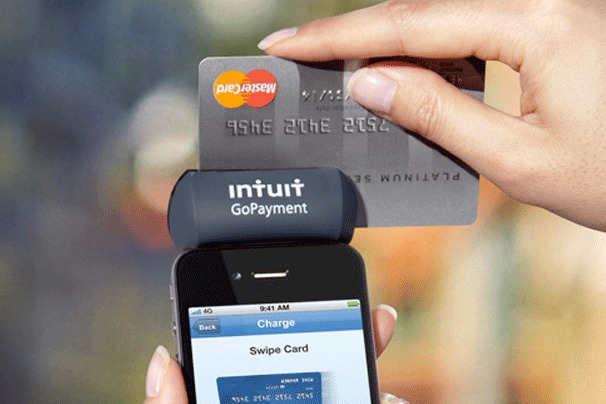While Square and PayPal have received quite a bit of hype for their mobile credit card payment solutions, they’re still just “point of sale-lite,” according to Intuit’s mobile payments and point of sale (POS) head Trevor Dryer.
[aditude-amp id="flyingcarpet" targeting='{"env":"staging","page_type":"article","post_id":467207,"post_type":"story","post_chan":"none","tags":null,"ai":false,"category":"none","all_categories":"business,mobile,","session":"B"}']Mobile credit card readers are a fine solution for young businesses, but they currently don’t scale very well as businesses grow. Realizing that, Intuit announced today that it has integrated its GoPayment credit card reader with Quickbooks Point of Sale 2013 — allowing nascent businesses to start out with the GoPayment reader and easily transition into the more robust POS suite for more complex tasks.
“GoPayment was really started to tap the low end of the market,” Dryer told VentureBeat in an interview yesterday. Intuit launched GoPayment in 2009, giving it a healthy head start on both Square and PayPal’s Here. The company was surprised to find that businesses quickly wanted more robust features in GoPayment, and its existing POS users were increasingly turning to GoPayment even though they had difficulty synchronizing that mobile data with Quickbooks POS.
AI Weekly
The must-read newsletter for AI and Big Data industry written by Khari Johnson, Kyle Wiggers, and Seth Colaner.
Included with VentureBeat Insider and VentureBeat VIP memberships.
“The thing that is missing from other POS solutions is bringing together simple and complex features,” Dryer said. Intuit, of course, is no stranger to building complex financial applications. The company that made Quicken and Quickbooks household names now has more than 200,000 small business customers using Quickbooks POS, a market that it’s been pursuing for over ten years now, and over 8 million small business customers in total. If any company is going to help mobile payments mature, it could very well be Intuit.
The GoPayment integration works as you’d expect: in QuickBooks Point of Sale 2013 you’ll now easily be able to see sales made from the credit card reader. And on the GoPayment end, you’ll be able to see live inventory and pricing data from Quickbooks POS.
While GoPayment was likely enough to handle your your artisanal organic goat cheese business as you camped out in your local farmer’s market, you’ll quickly outgrow it as you build your cheese empire. QuickBooks POS offers plenty of features to help your growing business, including inventory tracking, multi-location management, customer tracking, employee hour and pay management, and more.
Eventually the likes of Square and PayPal will have to offer similar solutions for growing retail businesses — unless they’re content with just handling the low-end of the mobile payments market. (E-commerce is a different story for PayPal, where it’s powering payments for many online businesses.)
Dryer mentioned offhandedly that he’s noticing many small businesses are being influenced by Apple’s new move towards mobile payments with its stores. They’re seeing Apple offer cool features like self-checkout from your phone, and they want a piece of that action. He mentioned a garden store that now uses GoPayment for large items, which lets customers bring those items directly to their cars instead of dragging them to the checkout lane.
Quickbooks Point of Sale 2012 starts at $1,099.95 for the most basic version of the software, and there are also other bundles which includes retail hardware.
[aditude-amp id="medium1" targeting='{"env":"staging","page_type":"article","post_id":467207,"post_type":"story","post_chan":"none","tags":null,"ai":false,"category":"none","all_categories":"business,mobile,","session":"B"}']
VentureBeat's mission is to be a digital town square for technical decision-makers to gain knowledge about transformative enterprise technology and transact. Learn More

